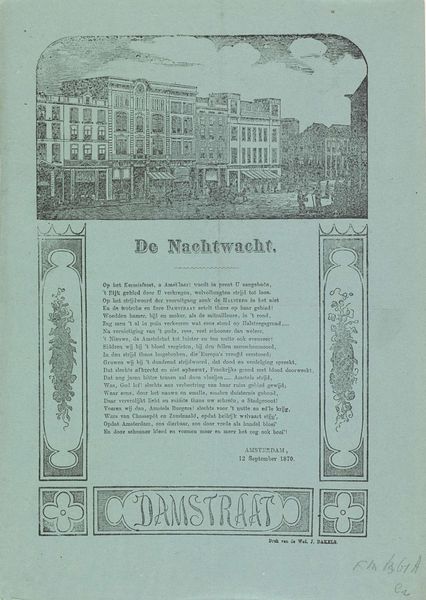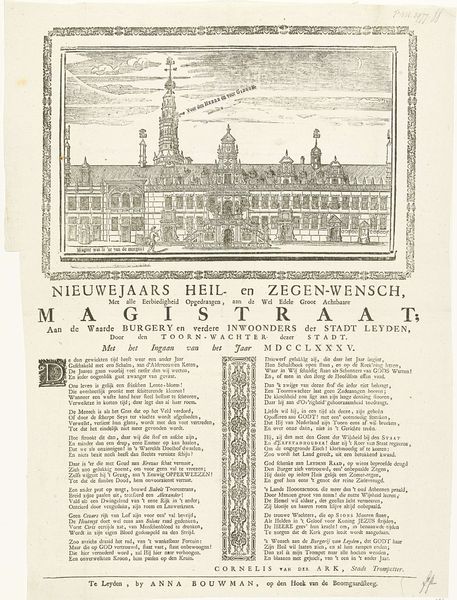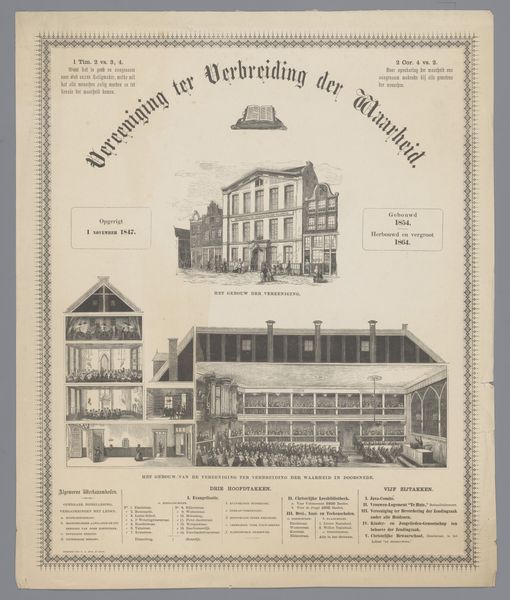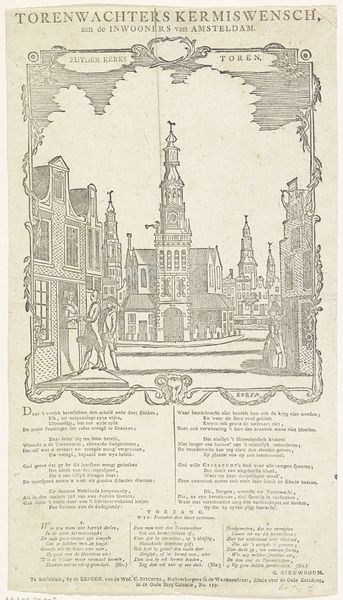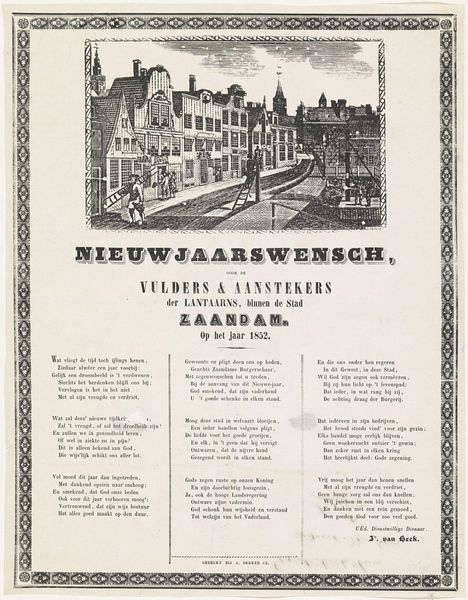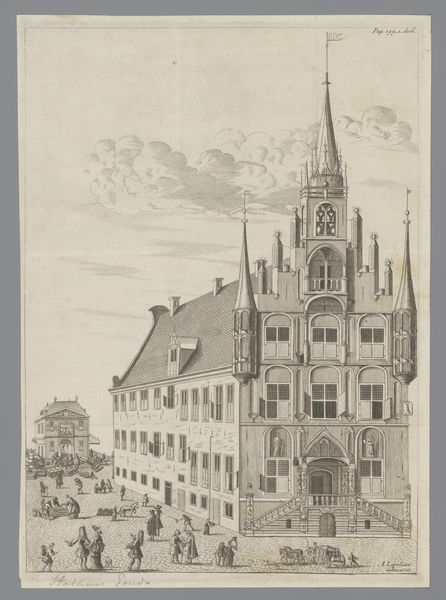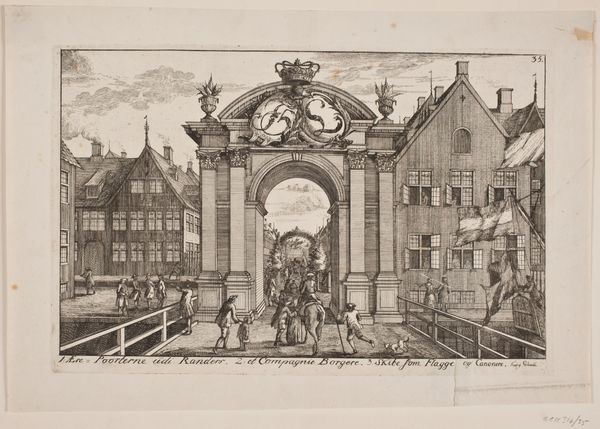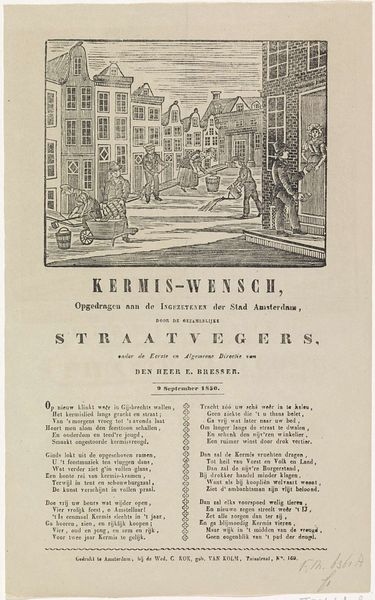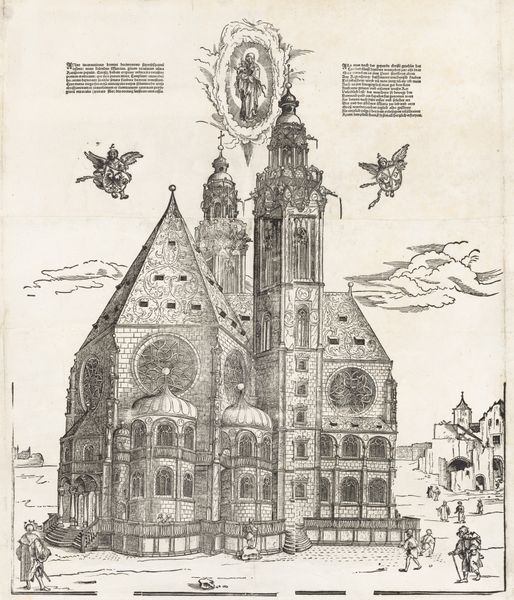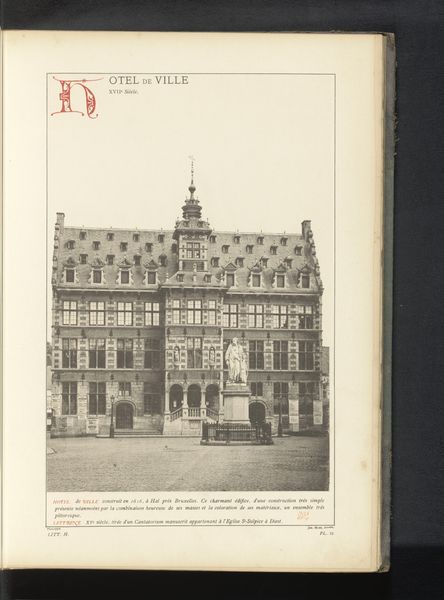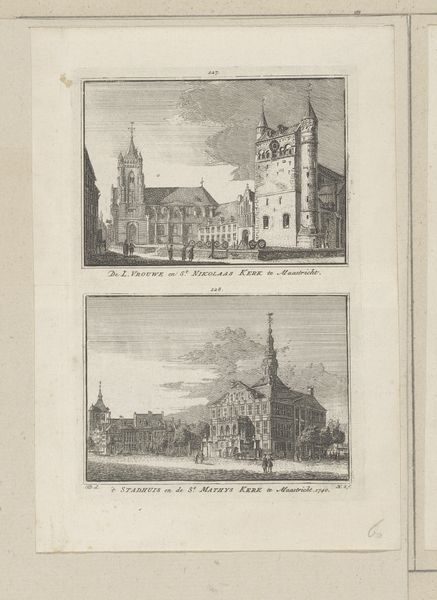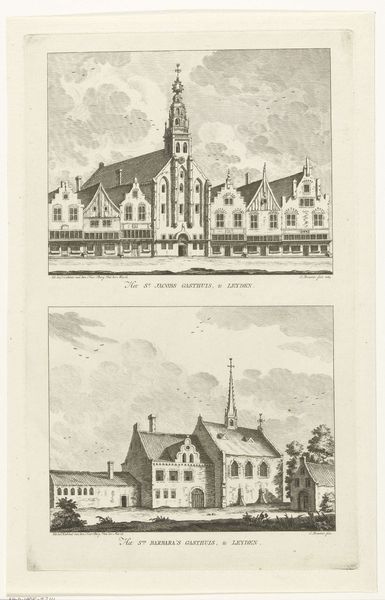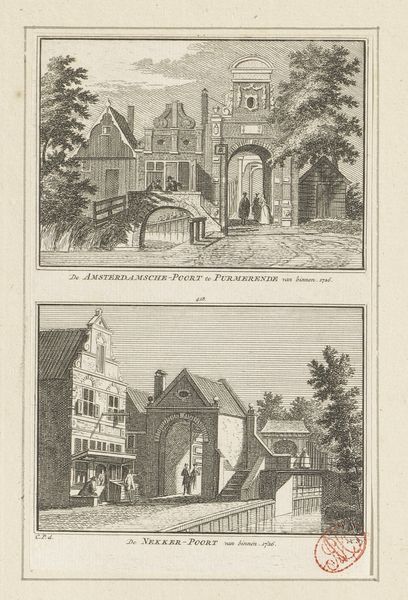
print, engraving
dutch-golden-age
mechanical pen drawing
old engraving style
text
cityscape
engraving
Dimensions: height 304 mm, width 195 mm
Copyright: Rijks Museum: Open Domain
Editor: Here we have "Nieuwjaarswens van de Amsterdamse nachtwacht voor het jaar 1871", or "New Year's wish of the Amsterdam Night Watch for the year 1871," an engraving from between 1870 and 1871. It depicts a cityscape above a poem, framed by what look like sculpted figures. What strikes me is the contrast between the ordinary-looking city scene and the ornate, almost gothic, framing. What can you tell me about this work? Curator: It's fascinating how this print combines civic pride with a keen awareness of social welfare during a period of significant transformation for Amsterdam. Consider the time it was made—just after the Franco-Prussian War. How do you think the recent war might influence the artist to produce this engraving? Editor: I guess, the “Nieuwjaarswens” wishes for things like civilization and the increase of wealth, and these are probably tied to the idea of peace after the war. Curator: Exactly. The text emphasizes peace, prosperity, and civic virtue. Think about how prints like this functioned. It’s a mass-produced image, designed for wide distribution. What’s its purpose? Editor: It feels like a piece of propaganda, or maybe more like civic boosterism. It's trying to instill a sense of unity and hope in Amsterdam. Curator: Precisely. And note the depiction of what appear to be almshouses or hospitals. The "night watch" isn't just about security; it's about the care and moral uplift of the community. What do you make of the conscious parallel, perhaps, with Rembrandt's famed painting, which shared that moniker of 'night watch'? Editor: The text talks about 'watchful eyes’ too. Maybe this relates to being vigilant about upholding moral values? It also underscores the idea of a community keeping watch over its citizens and reinforces your point about social responsibility being central to civic duty at the time. Curator: Indeed. Seeing it as a carefully crafted piece of public messaging reveals a great deal about Amsterdam's self-image during this era of modernization and nation-building. Editor: That gives me a new perspective. I was initially caught up in the visual contrast, but understanding the historical and social context really unlocks its meaning.
Comments
No comments
Be the first to comment and join the conversation on the ultimate creative platform.
